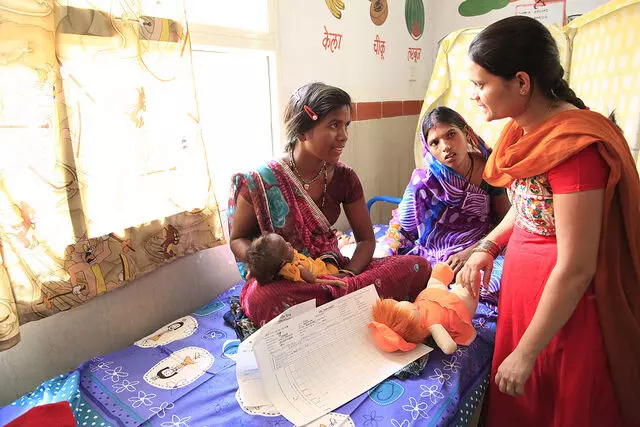31 Things That Can Save Dying Indian Mothers

A 12-point checklist created for airline pilots to check human errors during flying inspired a similar list for Indian health workers, leading, in a test, to a drastic fall in the number of mothers who die during childbirth. The new health checklist, which includes simple procedures, such as washing hands and holding a baby close, is now being tested in one of India's most backward states, a precursor to possible nationwide adoption. Our story unfolds through nursing midwife, Ishrawati (she uses only one name), a registered nurse at a primary health centre, providing care before, during and after pregnancy. She plays a key role in the ensuring babies and mothers survive in the eastern Uttar Pradesh town of Baldirai in Sultanpur district, much as thousands of other healthcare staff do across India. There is much experience Ishrawati has gained in the field, but there were some important things she did not know about until recently--for instance, the importance of checking the blood pressure of a mother at admission and after delivery. High blood-pressure is a sign of eclampsia. Left untreated, it causes seizures, convulsions and commonly kills pregnant women, responsible for 24% of all maternal deaths in India. Now, thanks to the World Health Organisation (WHO) safe childbirth checklist, Ishrawati checks the mother's blood-pressure before and after admission. There are other seemingly simple things on the 31-point checklist that have helped Ishrawati improve her efficiency and ensure fewer deaths: keep the delivery tray ready with thermometer, blood-pressure cuff, gloves and medications. It has taught her to provide skin-to-skin care to newborns immediately after birth; it helps keep babies warm and safe. Ishrawati's renewed skills are part of a trial programme called ‘Better Birth’, being conducted in about 120 primary health care centres and hospitals in UP, a state with high maternal mortality (MMR), a prime indicator of the state's--and India's--backwardness. The programme aims to improve maternal and infant survival rates by having healthcare providers follow a checklist. The UP trial is led by Atul Gawande, surgeon and professor at the Harvard School of Public Health, author of three bestselling books and staff writer at the New Yorker. “Improving the quality of childbirth care in facilities is critical, but we have not known how to do it effectively. Classroom training does not produce behavior change. We think onsite coaching and use of a checklist can make a major improvement and save lives. We are hoping to prove it,”said Dr. Gawande in an email interview to Indiaspend.org. The trial is supported by the Gates foundation and run by the Harvard School of Public Health, in collaboration with the UP government, PSI, Community Empowerment Laboratory and WHO. "UP is one of the most challenging states to work in," said Atul Kapoor, CEO of non-profit Population Service International (PSI), one of the collaborators in UP, which has the second-worst record of mothers dying during childbirth of any Indian state. "If it works here, then it can be scaled up to the entire nation." In 2012, a six-month study conducted in Karnataka by Harvard, WHO and Karnataka's Jawaharlal Nehru Medical College reported a dramatic decline in the MMR after a 150% rise in adherence to the checklist. The number of mothers who died for every 100,000 live births fell by more than 62%, from 203 to 126, according to results published in the journal PLoS ONE. The practices, so successful in Karnataka and now being tested in UP, are modeled on a simple check list created for pilots and co-pilots. It includes step-wise instructions for use at four critical junctures in care during birth: at the time the woman is admitted, when the woman begins to push or before cesarean, within one hour after birth, and before discharge. India has seen a significant decline in the MMR. It fell 16% on average across India in 2011-12, when 178 women died during every 100,000 live births, from 2007-09, when 212 died. But this decline is considered inadequate, and--even if new techniques and practices, such as the checklist, are quickly implemented--there is little chance that states such as UP will achieve the United Nations' millenium development goal (MDG) of 103 deaths for 100,000 live births by 2015. Uttar Pradesh (and Uttarakhand) occupied second-last position on the list of states, with 292 deaths. The last position went to Assam with 328 deaths. It may be more realistic for the southern states, which saw their MMR fall to 105, to reach the UN's targets.
Tags:
Next Story


